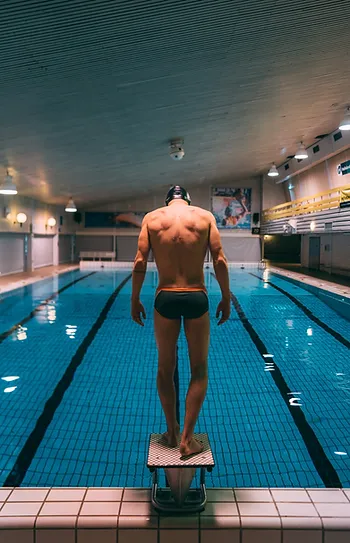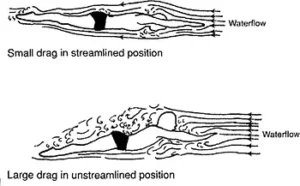Land based drills to enhance a swimmer’s performance
By: Dr. Ashley Kranz
Ever had your coach yell “get your hips on top of the water!”? Or “drive with your hips”? What does that even mean?? In this blog we’ll address the importance of hips (and legs) in relationship to swimming performance.
The main reason swimmers try to keep their hips and legs on top of the water is to reduce drag. Drag is the resistance that water exerts on the body as you move through it.1 Drag can be reduced many ways, wearing a swim cap, shaving, wearing a fast suit, etc. But the most efficient and effective way to decrease drag is to adjust your body positioning as you move through the water.
Now what about your legs? Other than just adding speed to your strokes, a strong kick assist with keeping your hips and trunk afloat, meaning a higher position in the water. Improved positioning of the hips results in less energy required “dragging” your legs through the water (pun intended), rather, elevated hips allows for more energy to be utilized in keeping your body moving forward through the water.
So how do we keep our hips on top of the water?
The answer is with increased strength, flexibility, and control of your lower limbs, extensors, and core.
Not only does increasing leg strength help reduce drag, but other added benefits are it allows a swimmer to cover greater distance with each stroke/kick. For specific strokes, like breaststroke and even butterfly, up to 50% of the stroke is driven by the legs.2 Also beating someone off of a turn is done so by driving your legs and having a great streamline. And let’s not forget the most obvious additional benefit of increased leg strength, which involves the start of a race. The stronger your legs are the further you are able to jump off the starting block.
Click Here for 7 Body Weight Exercises to improve lower extremity strength and endurance.
In you have access to dumbbells or weights, Click Here for additional exercises.
In conclusion: your legs and hips are important for every part of swimming:
-starts
-kicks
-turns
-underwaters
-streamline positioning
Less Drag comes from Higher Hips which equals Faster Times. Simple math calls for a simple fix. HOWEVER a simple fix may not always be the easiest fix. Speak with your coach to develop the best alignment of your hips and legs for your body type and stroke.
After reading this, you may even consider the Legs and Hips to be more important than the arms in swimming. Decreasing your drag and resistance with appropriate positioning of the hips will decrease the amount of work a swimmer’s arm have to pull; thus, decreasing the chance of shoulder injuries discussed in the previous blog. CLICK HERE to check out Fish Out of Water- Part 1 if you missed it.
If you are interested in improving your performance, Click here to schedule your FREE phone consultation between you and a Doctor of Physical Therapy.
References:
1. Reducing Drag. Available: https://scienceinswimming.weebly.com/reducing-drag.html#:~:text=Drag%20is%20the%20resistance%20that,the%20resistance%20a%20swimmer%20exerts
1b. Image: Reducing Drag. Available: https://scienceinswimming.weebly.com/reducing-drag.html#:~:text=Drag%20is%20the%20resistance%20that,the%20resistance%20a%20swimmer%20exerts
2. Cocozza, Livio. Coordination in Breaststroke: Balance the Stroke, Kick and Sliding. Available: https://swimswam.com/coordination-in-breaststroke-balancing-the-stroke-kick-sliding/



